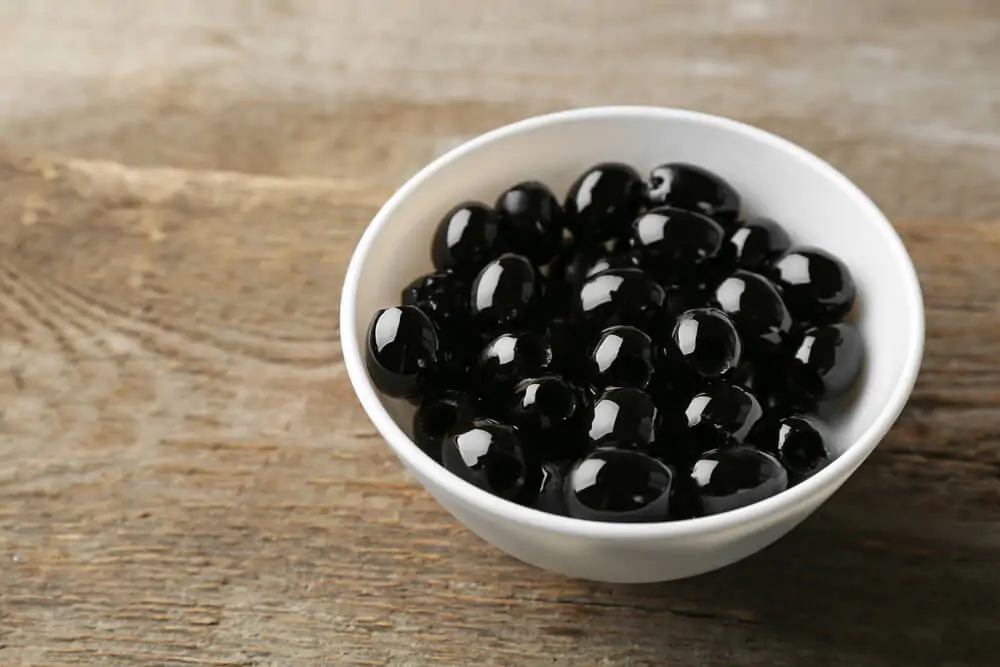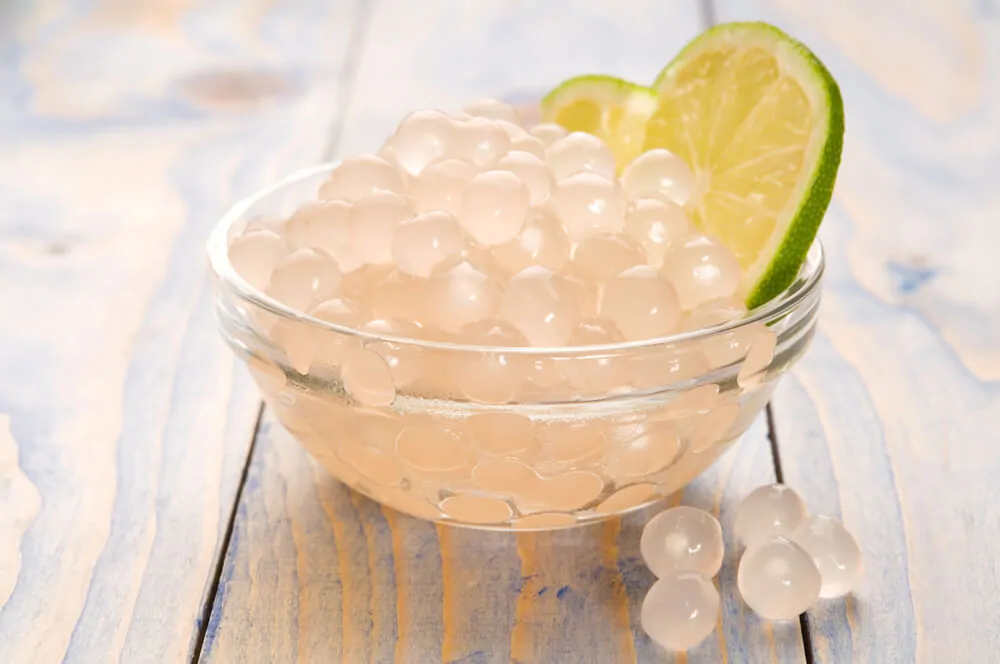This article will explore the similarities and differences of tapioca pearls vs sago.

Many Americans are familiar with tapioca as a type of pudding. If you are into Southeast Asian cuisine, you’ve likely heard of both tapioca pearls and sago as starches included in many dishes.
Tapioca pearls have left the world of pudding filler for many consumers in the form of bubble tea.
What Are Tapioca Pearls?

Tapioca is a starch extracted from the cassava root, a tuberous root of tropical plants. Tapioca pearls are balls of tapioca often used in bubble tea. When used in bubble tea, they are often referred to as boba.
What is Sago?
Sago is a starch that derives from the pith, spongy insides of tropical palm plants called Metroxylon sagu. Sago grows mainly in Indonesia and Malaysia. The most common use for sago is making pudding.
What Tapioca Pearls and Sago Have In Common
Both tapioca pearls and sago are plant-derived edible starch products used in Southeast Asian Cuisine. They behave similarly in cooking, and tapioca is often marketed as sago.
Cooking
Because they are so starchy, both are used as thickening agents in cooking. Puddings, other desserts, and stews get their textures from other sago or tapioca.
Nutrition
Nutritionally, they are very similar. Each starch is high in carbohydrates and low in protein, vitamins, and minerals. They serve as fillers and thickeners rather than adding health benefits to food.
Tapioca pearls and sago are both naturally gluten-free. You can substitute sago flour or tapioca flour in bread and recipes for your gluten-free diet.
Tapioca Pearls Vs Sago: The Differences
The main difference between tapioca pearls and sago is their origin. Tapioca comes from the cassava root native to northern and central-west Brazil. You can find it grown throughout South America now. Sago comes from Indonesia and Malaysia and is exported to Europe and other parts of Asia.
Production
Tapioca gets marketed as sago because it is a cheaper alternative. Sago palms take 8-10 years to mature, while cassava root plants are now prevalent in South America and other tropical climates. A root will always be much easier to harvest and process than a tree that takes a decade to grow.
When buying sago, check the label carefully to assure that you’ve got true sago.
Colors and Flavors
Tapioca Pearls featured in bubble tea often have colors and flavors added. You can only get white sago.
Black tapioca pearls are commonly used for the “bubbles” in bubble tea. Boiling the pearls with brown sugar added to the water gives them a deep, rich color and an even sweeter flavor.
Uses
Sago can be a versatile starch featured beyond puddings. Fish sausages, noodles, biscuits, and bread can all include sago. You will find sago packaged as smaller pearls or as a powder.
Tapioca pearls, however, are best known for their role in pudding and bubble tea.
What’s Better About Tapioca Pearls?
Tapioca pearls are cheaper to produce and usually less expensive than sago. If you are making a dish in which you can use either of them, the tapioca will be easier on your budget.
Availability
Tapioca pearls are easy to find online. You can purchase tapioca pearls in various sizes. Small pearl tapioca is for cooking and making puddings.
Large tapioca pearls are packaged and flavored specifically for making bubble tea. You can get them in many colors and flavors, such as honeydew and strawberry.
Easy Prep
Preparing tapioca pearls for bubble tea is easy. Simply drop them in boiling water and let cook for about fifteen minutes. You can test the consistency to make sure they are soft and chewy. Remove them from the heat to soak for another fifteen minutes and then drain.
What’s Better About Sago?

You could say that sago is the high-end version of tapioca. Sago producers must invest nearly a decade in one Sago palm, then the sago pearls are rolled by hand with bamboo trays.
Unfortunately, true sago is very difficult to come by. Most products available on the internet are mere tapioca substitutes. But, if you want to invest the time in finding the real deal, the flavor and texture compared to tapioca are unique experiences.
Who Should Get Tapioca Pearls?
Anyone who wants to make bubble tea at home can easily find large tapioca pearls online or in some stores. While tapioca substitutes sago in many cases, it does not work the other way around. Sago does not come in large pearls, and their texture is not well suited to bubble tea.
Who Should Get Sago?
Anyone seeking to make authentic Southeast Asian food should track down some true sago. When you opt to use sago rather than tapioca, you are experiencing the dishes you prepare closer to their traditional forms.
